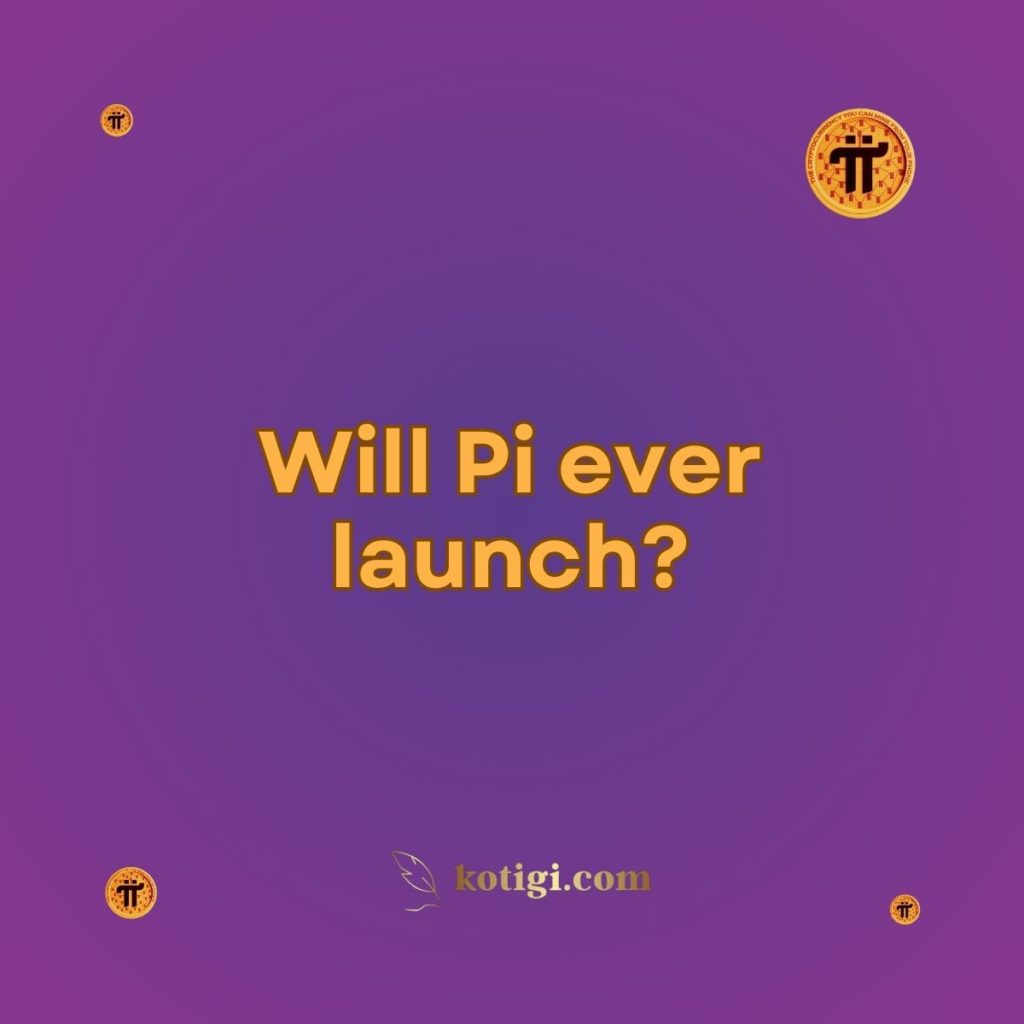
Will Pi ever launch?
Pi Network is currently in its enclosed mainnet phase, with plans to launch an open mainnet in the near future in Q1 2025. The transition to the open mainnet is crucial for the project’s success, as it will allow users to trade Pi coins on exchanges and use them in real-world transactions. While no official launch date has been confirmed, the development team has made significant progress toward this goal.
Introduction
Pi Network has captured the attention of millions of users worldwide with its innovative approach to mobile-based cryptocurrency mining. However, a question that many Pi enthusiasts and skeptics alike continue to ask is: “Will Pi ever launch?” As of now, Pi remains in its enclosed mainnet phase, meaning that Pi coins cannot be traded on external exchanges or used for real-world transactions. This article explores Pi Network’s progress, the timeline for its full launch, and the key factors that will determine whether Pi will successfully transition to an open mainnet.
Understanding Pi Network’s Current Phase
What is the Enclosed Mainnet?
Pi Network is currently in what is known as the “enclosed mainnet” phase. This phase is an intermediate stage in the project’s development, where the network is live but not yet open to the public for trading. During the enclosed mainnet phase, users can continue mining Pi coins and building the network, but they cannot trade their coins on cryptocurrency exchanges or use them outside of the Pi ecosystem.
The purpose of this phase is to allow the Pi core team to finalize critical elements of the network, including security measures, user verification, and regulatory compliance. It also gives the developers time to build the infrastructure needed to support a fully operational cryptocurrency that can be used for real-world transactions.
Progress So Far
Since its inception, Pi Network has made significant strides in terms of user growth and development. As of the latest updates, Pi Network has attracted over 40 million users, making it one of the largest cryptocurrency projects by user base. This massive community is a key asset for Pi Network, as it demonstrates widespread interest and adoption of the platform.
The Pi team has also introduced various features and improvements during the enclosed mainnet phase, such as enhanced security protocols, a Know Your Customer (KYC) verification process, and the development of decentralized applications (dApps). These steps indicate that Pi is moving closer to a full launch, though an official date has not yet been set.
What Needs to Happen Before Pi Launches?
Transition to the Open Mainnet
The most critical step in Pi Network’s journey is the transition from the enclosed mainnet to the open mainnet. The open mainnet is when Pi coins will become fully tradable on cryptocurrency exchanges, and users will be able to buy, sell, and use Pi coins for real-world transactions. This transition is essential for Pi to become a legitimate cryptocurrency with tangible value.
The Pi core team has outlined several milestones that need to be achieved before the open mainnet can be launched. These include:
- Completion of the KYC process: All Pi users must complete the KYC verification to ensure the legitimacy and security of the network. This process helps prevent fraud and ensures that Pi coins are only distributed to real, verified users.
- Development of the ecosystem: The Pi team is working on creating a robust ecosystem where Pi coins can be used for goods and services. This includes partnerships with businesses and the development of dApps.
- Regulatory compliance: Pi Network must ensure that it complies with all relevant regulatory requirements before it can launch its open mainnet. This includes navigating the complex legal landscape surrounding cryptocurrencies.
Key Challenges to Overcome
While Pi Network has made progress, there are still several challenges that need to be addressed before the open mainnet can launch. These include:
- Technical scalability: Pi Network must ensure that its infrastructure can handle the demands of a large, global user base. This includes ensuring the network can process transactions quickly and securely without becoming congested.
- Security concerns: The transition to an open mainnet introduces new security risks, such as potential attacks on the network. Pi must implement robust security measures to protect users’ funds and data.
- Regulatory hurdles: Cryptocurrencies face increasing scrutiny from regulators worldwide. Pi must navigate these regulatory challenges to avoid legal issues that could delay or prevent its launch.
Why the Open Mainnet is Important?
Market Value of Pi
Currently, Pi coins have no market value because they cannot be traded on external exchanges. The open mainnet is crucial because it will give Pi a real market value based on supply and demand. Once Pi is listed on major exchanges, users will be able to buy, sell, and trade the cryptocurrency, which will determine its market price.
Without the open mainnet, Pi remains a speculative asset with no tangible value. Therefore, the launch of the open mainnet is the most significant milestone in Pi Network’s roadmap, as it will enable Pi to be recognized as a legitimate cryptocurrency.
Use Cases and Utility
Another important aspect of the open mainnet is that it will enable Pi coins to be used in real-world transactions. The Pi team has emphasized the importance of creating a functional ecosystem where users can spend Pi on goods and services. This includes partnerships with businesses that accept Pi as payment and the development of dApps that utilize Pi for various purposes.
If Pi can successfully launch its open mainnet and establish use cases for the coin, it will significantly increase the cryptocurrency’s utility and value. However, without real-world use cases, Pi may struggle to gain widespread adoption beyond its initial user base.
When Can We Expect Pi to Launch?
Official Timeline
The Pi core team has not yet provided an official timeline for the launch of the open mainnet. However, they have indicated that the transition will occur once key milestones, such as KYC completion and ecosystem development, are achieved. This lack of a concrete launch date has led to some skepticism within the cryptocurrency community, with some users questioning whether Pi will ever launch at all.
Realistic Expectations
It’s important to have realistic expectations when it comes to the launch of Pi. Cryptocurrency projects often take years to fully develop, and Pi is no exception. The team behind Pi Network has demonstrated a commitment to building a secure, scalable, and compliant cryptocurrency, but this takes time.
While the exact launch date remains uncertain, the progress made so far suggests that Pi is moving in the right direction. Users should continue to monitor updates from the Pi team and remain patient as the project progresses toward its open mainnet phase.
Factors That Could Accelerate the Launch
Several factors could accelerate Pi Network’s transition to the open mainnet. These include:
- Increased user participation in KYC: If more users complete the KYC process, it could speed up the network’s readiness for launch.
- Successful partnerships: If Pi Network secures partnerships with major businesses or exchanges, it could help accelerate the adoption and launch of the open mainnet.
- Regulatory clarity: If regulators provide clearer guidelines for cryptocurrencies, it could streamline Pi Network’s compliance efforts and facilitate a faster launch.
What Happens After Pi Launches?
Trading on Exchanges
Once Pi transitions to the open mainnet, the first major change will be that Pi coins become tradable on cryptocurrency exchanges. Users will be able to sell their mined Pi coins, buy more Pi, or trade it for other cryptocurrencies like Bitcoin or Ethereum. This will give Pi a real market value and make it a fully functional cryptocurrency.
However, the value of Pi will be determined by market forces, and there is no guarantee that Pi will have a high price when it first launches. The price will depend on factors such as supply, demand, and the overall performance of the cryptocurrency market at the time of launch.
Ecosystem Development
The Pi team has emphasized the importance of creating a robust ecosystem where Pi coins can be used for transactions. After the launch of the open mainnet, the team’s focus will likely shift toward expanding the ecosystem and increasing the number of businesses and applications that accept Pi as payment.
The success of Pi Network will depend heavily on whether it can create real-world use cases for Pi coins. If Pi can establish itself as a practical and widely accepted cryptocurrency, it could have a strong future in the crypto space.
Conclusion
The question of whether Pi will ever launch is one that continues to be debated within the cryptocurrency community. While Pi Network has made significant progress in terms of user growth and development, the project still faces several challenges before it can fully launch its open mainnet. The success of Pi will depend on its ability to complete the KYC process, build a functional ecosystem, and navigate regulatory hurdles.
For now, Pi remains in its enclosed mainnet phase, but there is reason to believe that the project will eventually launch. Users should remain patient and stay informed about updates from the Pi team as the project moves closer to its goal of becoming a fully operational cryptocurrency.
Key Takeaways:
- Pi Network is currently in its enclosed mainnet phase, and the open mainnet is crucial for the project’s full launch.
- Key milestones for the launch include KYC completion, ecosystem development, and regulatory compliance.
- The open mainnet will allow Pi to be traded on exchanges and give it real market value.
- The timeline for Pi’s launch remains uncertain, but progress is being made toward achieving the necessary milestones.
- After launch, Pi’s success will depend on the development of a functional ecosystem and real-world use cases for the coin.





